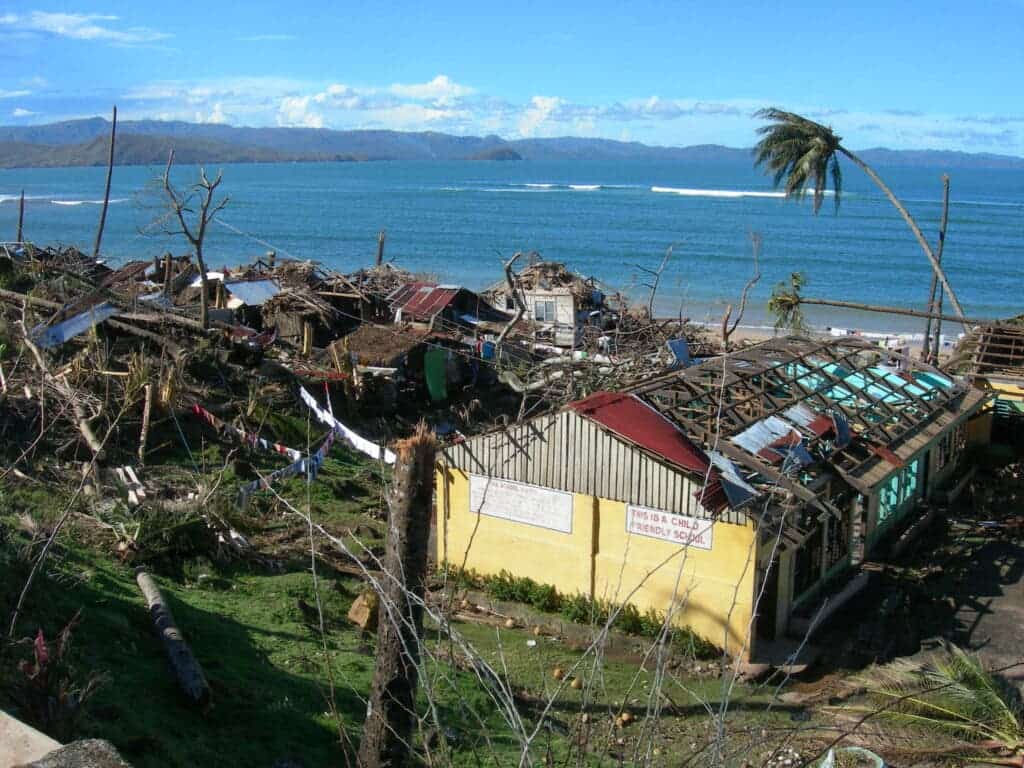The typhoon Rai, also known locally as Odette, has forced nearly 100,000 people to be evacuated from high-risk areas in the southeast of the Philippines, after bringing torrential rain and the threat of flooding in the archipelago. The typhoon has generated winds of 185 kilometers (115 miles) per hour, and although there have been no reports of casualties or major damage, authorities are still on alert.

Among all meteorological disasters, typhoons are among the most severe ones in terms of human lives and urban development affected. They have a great destructive power and can bring other hazards such as flooding. There’s also scientific consensus that global warming is making typhoons stronger and more frequent. However, these disasters are often underreported by international media.
The Philippines is often described as one of the world’s hotspots for typhoons, floods, droughts and earthquakes. Every year, about 20 typhoons, (the equivalent of 25% of all typhoons around the globe), take place in the country. Most occur during the rainy season, from July to September, but studies showed this is now extending to December.
The country is surrounded by warm ocean water and this paves the way for typhoons, which need a water temperature above 28ºC. In the recent decades, the Philippines has seen a number of devastating typhoons affecting the country, including typhoon Ondoy in 2009, Pepeng in 2009, Juan in 2010, Sendong in 2011 and Labuyo in 2013.
Typhoon Rai is the 15th one to hit the country this year. The International Federation of Red Cross and Red Crescent Societies (IFRC) has described it as “one of the world’s strongest storms” of the year and said it’s threatening “millions of people with destructive winds and flash floods” – deploying volunteers to help local residents.
“This monster storm is frightening and threatens to hit coastal communities like a freight train. We are very concerned that climate change is making typhoons more ferocious and unpredictable,” IFRC Head of Philippine Country Office Alberto Bocanegra said in a statement. “Emergency teams are in overdrive to help people.”
A destructive power
The country’s weather agency, PAGASA, said the typhoon made landfall in the Siargao Island earlier today, with “very destructive typhoon-force winds” already visible in several parts of the country. Storm surges in coastal areas are expected, PAGASA said, as well as flooding and landslides. Over 98,000 people have already been evacuated.
Keeping people safely distanced in evacuation centers amid the Covid-19 pandemic has proven challenging for authorities. The Philippines is one of the countries in Southeast Asia most affected by the pandemic, with over 2,8 million infections and 50,000 deaths. Initial infections from the Omicron variant were already detected prior to the typhoon.
The government has placed eight regions of the country (all in central and southern areas) on the highest level in emergency preparedness and response protocol. Most domestic flights were canceled, schools and workplaces were shut in vulnerable areas and all vessels were grounded by the coast guard, stranding nearly 4,000 people.
“We have undertaken all the necessary precautions, prepositioned resources, and closely coordinated with the localities to prepare for immediate emergency and relief response,” President Rodrigo Duterte said in the inauguration of a new train, adding the government is closely monitoring the movement of typhoon across the country.


